Abstract
The Cardiff Cervical Cytology Study showed a prevalence of carcinoma-in-situ that rose to a peak of 6.1/1000 in age group 35-44 and then decreased. Prevalence of microinvasive and occult invasive carcinoma rose to peaks of 1.8/1000 and 1.1/1000 respectively in age group 45-54 and then declined. Epidemiological analysis was based on comparison to three groups-dysplasia, carcinoma-in-situ and microinvasive carcinoma combined, and occult and clinical invasive carcinoma combined. For all groups prevalence increased with lower social class, was higher in widowed, divorced and separated women than in married women, and increased with decreasing age at first marriage and at first pregnancy and with increasing number of pregnancies. The magnitude of these association was remarkably similar for all three histological groups. Screening for cervical neoplasia is based on the belief that the various histological categories are part of a continuum, a spectrum of disease, and the existence of a common epidemiological pattern for the three histological groups is consistent with such a hypothesis.
Full text
PDF
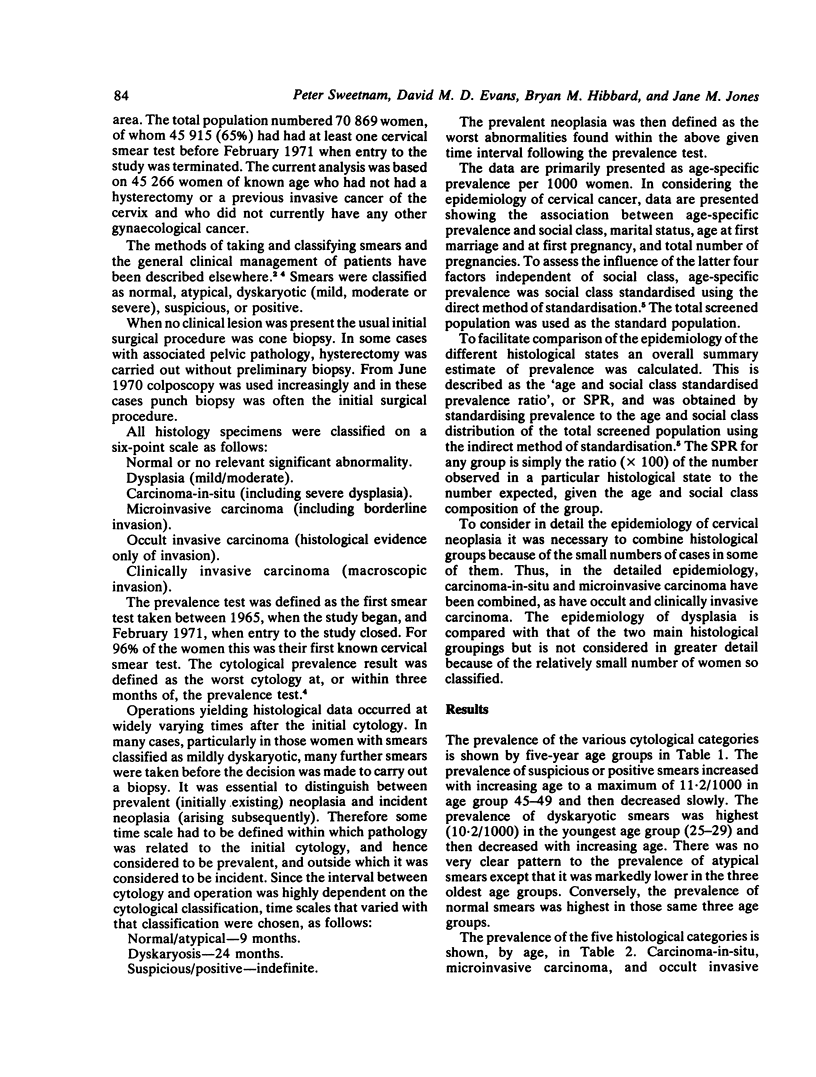
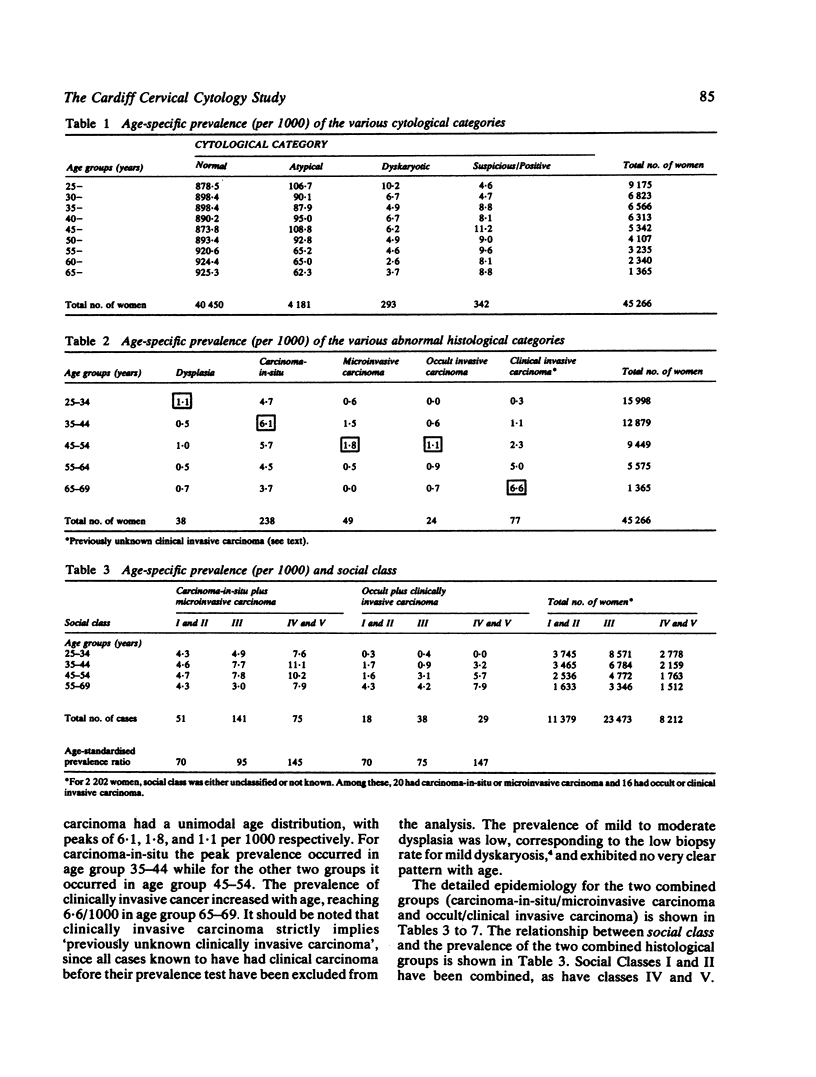
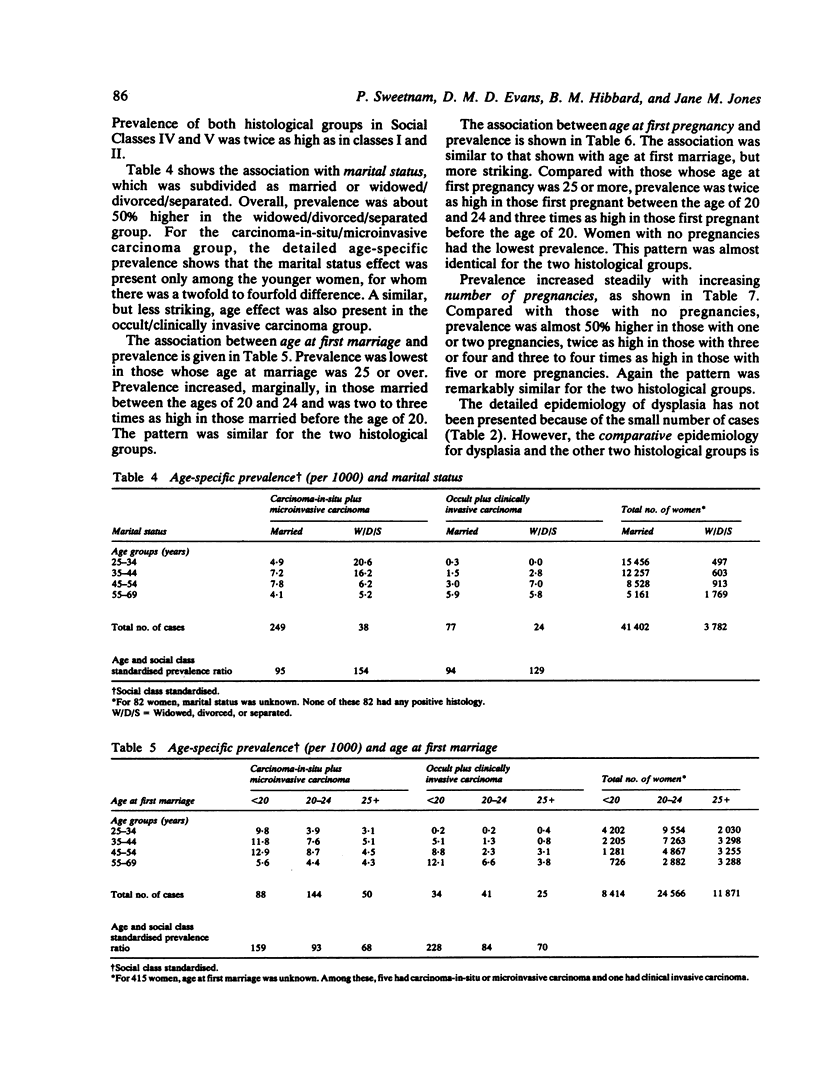
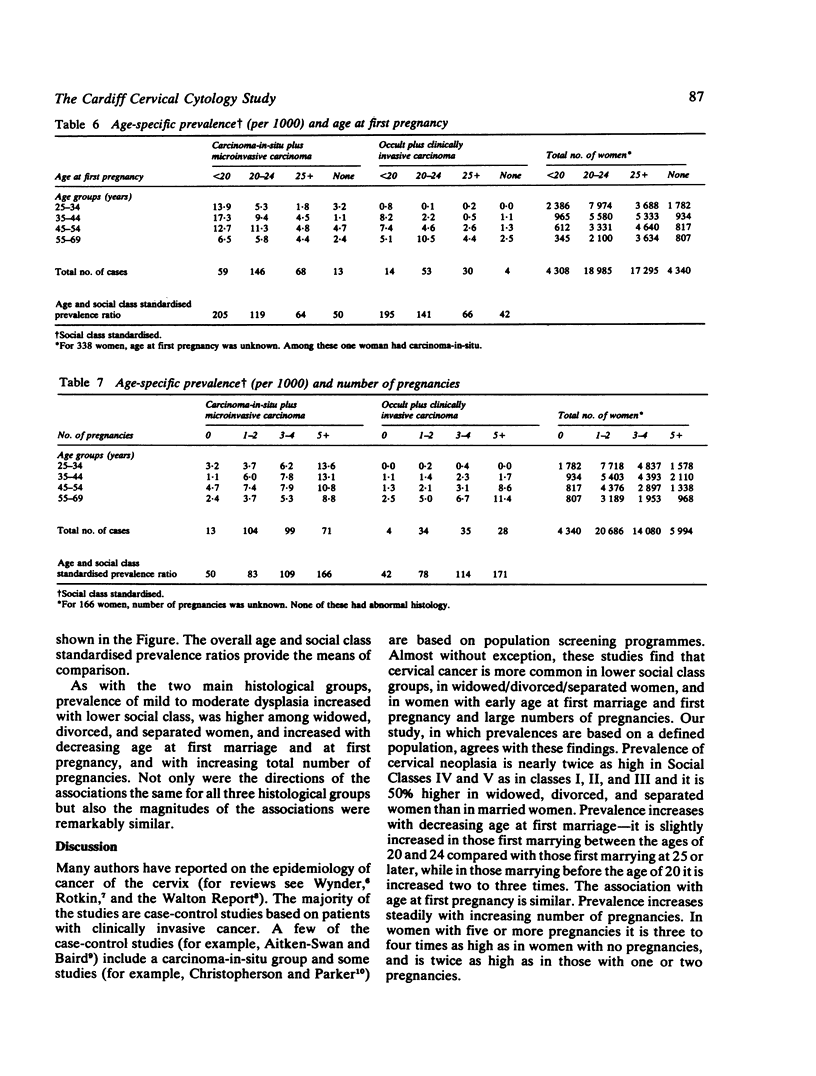
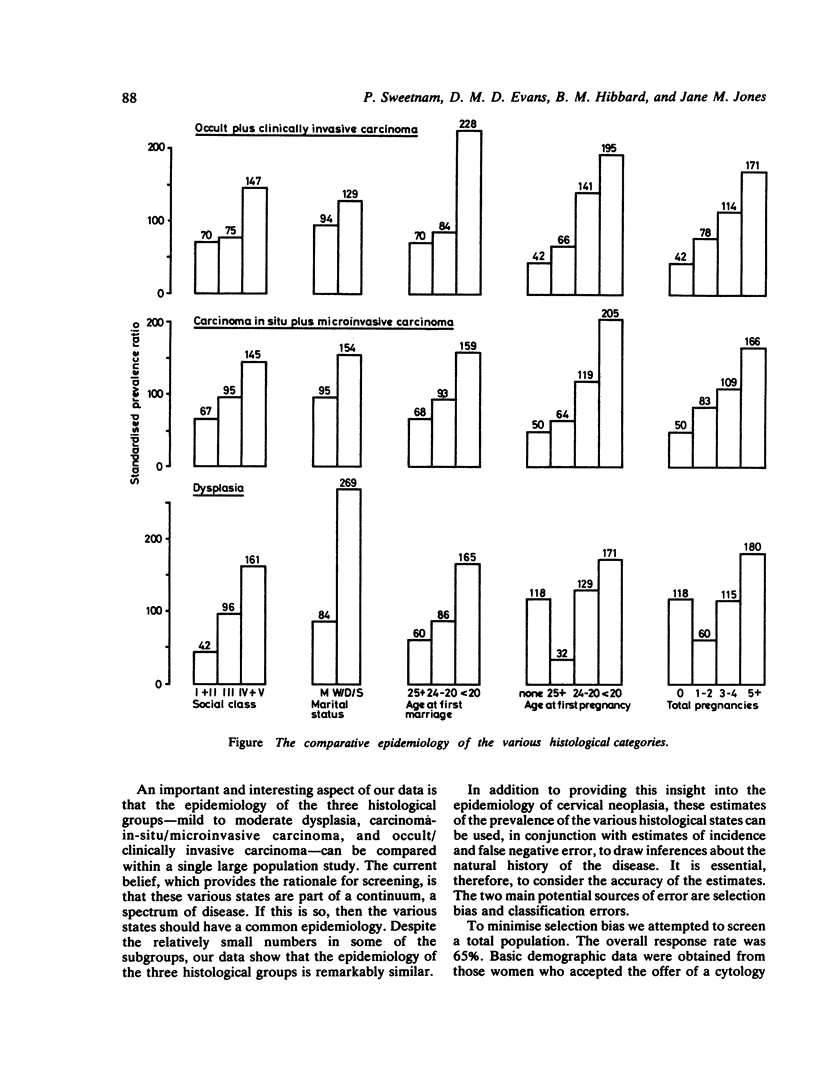
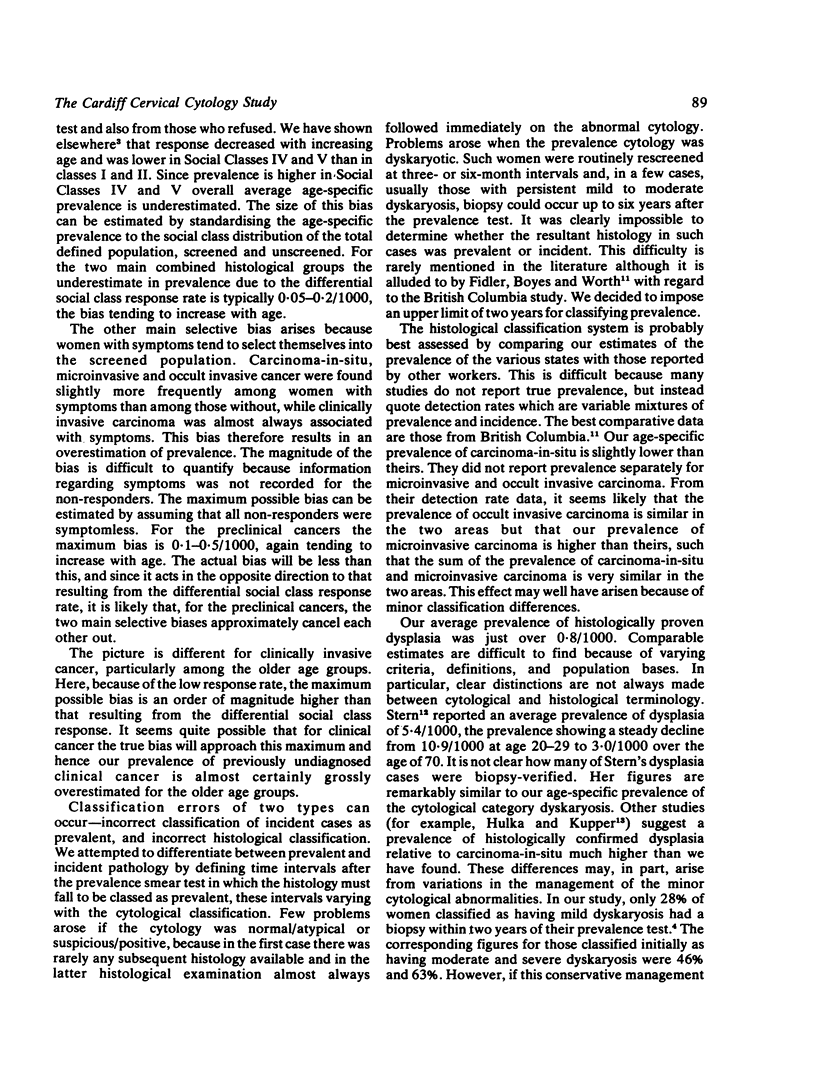
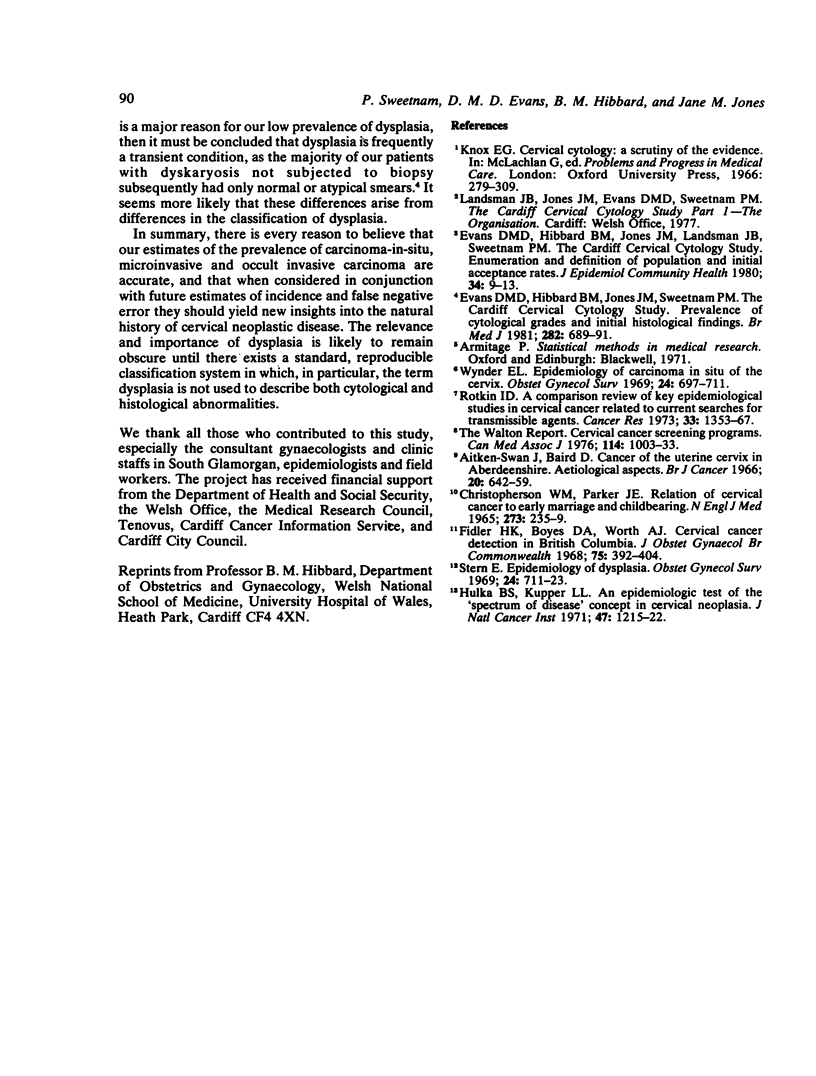
Selected References
These references are in PubMed. This may not be the complete list of references from this article.
- Aitken-Swan J., Baird D. Cancer of the uterine cervix in Aberdeenshire. Aetiological aspects. Br J Cancer. 1966 Dec;20(4):642–659. doi: 10.1038/bjc.1966.76. [DOI] [PMC free article] [PubMed] [Google Scholar]
- Evans D. M., Hibbard B. M., Jones J. M., Sweetnam P. The Cardiff Cervical Cytology Study: prevalence of cytological grades and initial histological findings. Br Med J (Clin Res Ed) 1981 Feb 28;282(6265):689–691. doi: 10.1136/bmj.282.6265.689. [DOI] [PMC free article] [PubMed] [Google Scholar]
- Fidler H. K., Boyes D. A., Worth A. J. Cervical cancer detection in British Columbia. A progress report. J Obstet Gynaecol Br Commonw. 1968 Apr;75(4):392–404. doi: 10.1111/j.1471-0528.1968.tb00136.x. [DOI] [PubMed] [Google Scholar]
- Hulka B. S., Kupper L. L. An epidemiologic test of the "spectrum of disease" concept in cervical neoplasia. J Natl Cancer Inst. 1971 Dec;47(6):1215–1222. [PubMed] [Google Scholar]
- Rotkin I. D. A comparison review of key epidemiological studies in cervical cancer related to current searches for transmissible agents. Cancer Res. 1973 Jun;33(6):1353–1367. [PubMed] [Google Scholar]
- Stern E. Epidemiology of dysplasia. Obstet Gynecol Surv. 1969 Jul;24(7 Pt 2):711–723. doi: 10.1097/00006254-196907001-00005. [DOI] [PubMed] [Google Scholar]
- The Cardiff cervical cytology study. Enumeration and definition of population and initial acceptance rates. J Epidemiol Community Health. 1980 Mar;34(1):9–13. doi: 10.1136/jech.34.1.9. [DOI] [PMC free article] [PubMed] [Google Scholar]
- Wynder E. L. Epidemiology of carcinoma in situ of the cervix. Obstet Gynecol Surv. 1969 Jul;24(7 Pt 2):697–711. doi: 10.1097/00006254-196907001-00004. [DOI] [PubMed] [Google Scholar]


